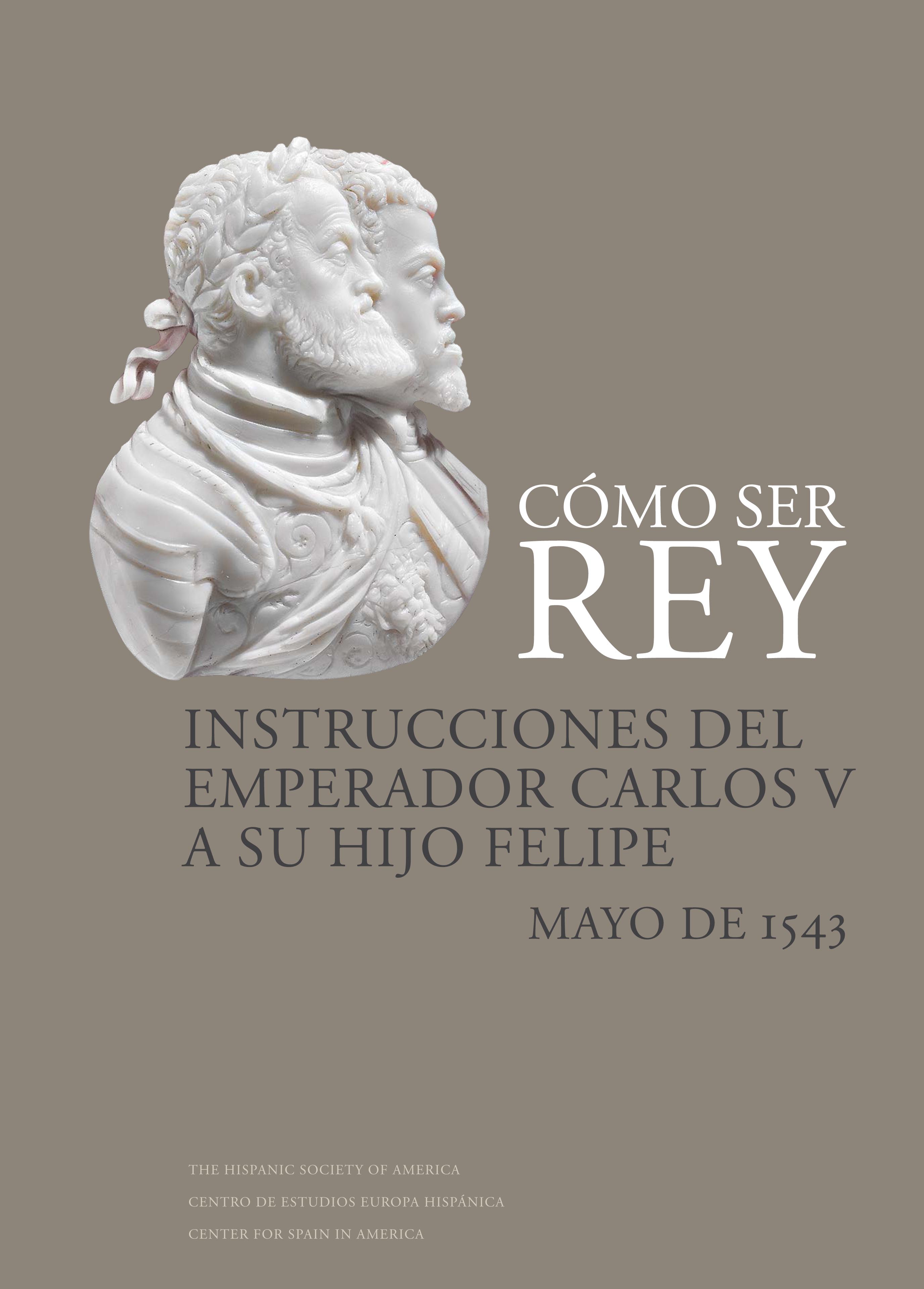Author
Rachael Ball and Geoffrey Parker (eds.)
Characteristics
160 pages; 68 color illustrations; hardcover with jacket; 23,5 x 32,5 cm
Publication
Spanish-English bilingual edition; jointly published with the CSA and The Hispanic Society of America; 2014
ISBN
978-84-15245-45-2
Price
€38,47
In 1872, the eminent Belgian historian Louis-Prosper Gachard praised the secret Instructions written in Palamos on 4 and 6 May 1543 by Emperor Charles V for his son, the future Philip II, as “monuments of wisdom and foresight, born of a mature experience in the art of government, and a profound knowledge of men and affairs. These alone suffice to place Charles V in the first rank of the statesmen of his day.” Strangely enough, virtually no one has seen the originals of either document, acquired for the Hispanic Society of America in 1906 by its founder, Archer M. Huntington. Instead, Gachard and other historians have had to work from various copies, each one containing alternative readings. The holograph originals of each document, reproduced here together with a full transcription as well as a version in modern Spanish and an English translation, reveal for the first time exactly what the emperor wrote on the eve of his departure from Spain to fight the French, leaving his 15-year-old son Philip as regent. The heavily corrected texts prove beyond all doubt that Charles composed and revised both documents – by far the longest he ever wrote – entirely alone and in secret. With all the interpolations and corrections, they represent the emperor’s unvarnished thoughts. The task must have absorbed several days of the emperor’s time, just as he had to oversee arrangements for his departure and for the regency as well as planning military and naval operations against his enemies. However, Charles knew that he must leave detailed guidance for the son he might never see again, should he die or be captured on his dangerous mission. His two Instructions therefore form, just as the emperor intended, a masterclass in Cómo ser rey.
Rachael Ball teaches History at the University of Alaska Anchorage. She specializes in Modern History of Spain and Latin America. She earned a doctorate in Modern European History from Ohio State University in 2010. Before joining her current department, she taught at Minnesota State University and Kenyon College. Ball has received research grants from the Fullbright Foundation, the Spanish Ministry of Culture, and the National Endowment for the Humanities.
Geoffrey Parker is professor of History at Ohio State University. He has published several books on the history of Spain in the sixteenth and seventeenth centuries, such as Philip II (1984); The Grand Strategy of Philip II (1998), which won the Samuel Eliot Morison award of the Society for Military History; and The Global Crisis: War, Climate, and Catastrophe in the SeventeethCentury (2013), which received the British Academy Medal for the most significant book published in the field of the humanities and social sciences. In 2012, the Royal Netherlands Academy of Arts and Sciences awarded him the biennial Heineken History Prize.

